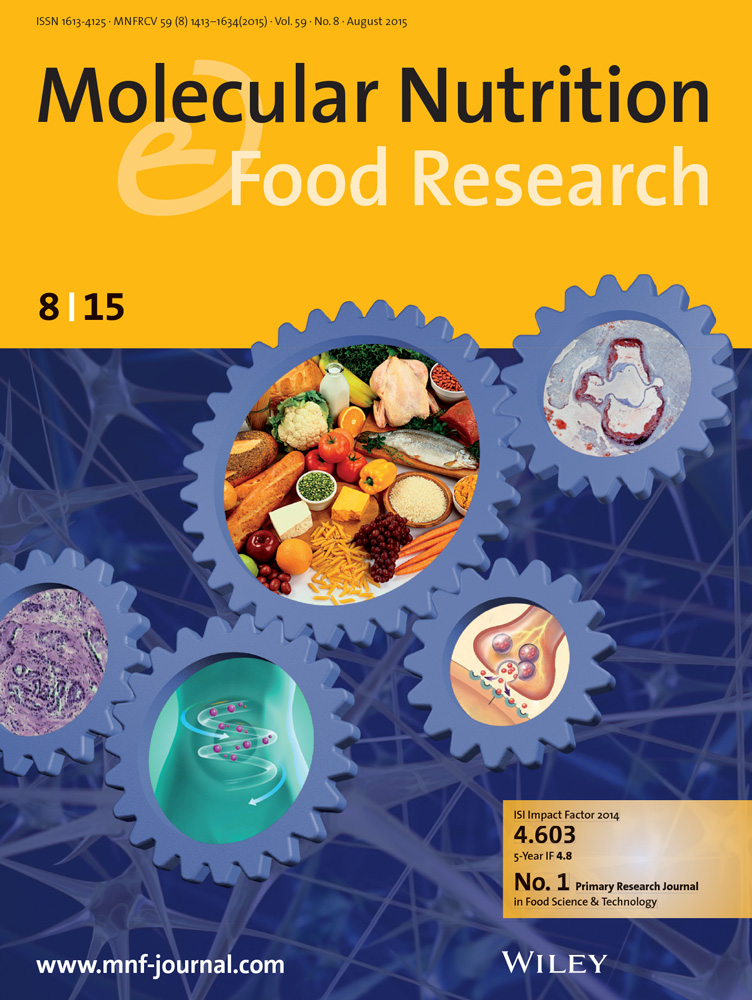Neuroprotective Potential of the Flavonoids Quercetin and Epicatechin in a C. elegans Tauopathy Model.
IF 4.5
2区 农林科学
Q1 FOOD SCIENCE & TECHNOLOGY
引用次数: 0
Abstract
The prevalence of cognitive disorders such as Alzheimer's disease (AD) is increasing due to the global rise in longevity. The accumulation of amyloid β (Aβ) deposits and hyperphosphorylated Tau protein (p-Tau) are considered the main hallmarks of AD. A growing body of evidence suggests that the regular intake of flavonoid-rich foods could reduce the risk of developing AD or mitigate its progression. This study explores the potential of quercetin (Q) and epicatechin (EC) as effective molecules against AD-like pathology, using the Caenorhabditis elegans BR5270 strain, which expresses the pro-aggregant F3DK280 fragment of the human Tau protein. The results showed that after exposure to 150 µM of EC or Q, worms exhibited increased lifespan, improved chemotaxis, and delayed age-related decline in locomotion. To explore the molecular mechanisms involved, the expression of genes associated with the inhibition of p-Tau proteotoxicity were measured by RT-qPCR. It was found that Q and EC significantly increased the expression levels of autophagy-related genes and of a key gene for de novo synthesis of α- tubulin. EC and Q delay neurodegeneration in the C. elegans tauopathy model, suggesting their potential to reduce the risk of AD progression.黄酮类、槲皮素和表儿茶素对秀丽隐杆线虫病变模型的神经保护作用。
由于全球寿命的延长,认知障碍如阿尔茨海默病(AD)的患病率正在上升。淀粉样蛋白β (Aβ)沉积的积累和过度磷酸化的Tau蛋白(p-Tau)被认为是AD的主要标志。越来越多的证据表明,经常摄入富含类黄酮的食物可以降低患阿尔茨海默病的风险或减缓其进展。本研究利用秀丽隐杆线虫(Caenorhabditis elegans) BR5270菌株,探索槲皮素(Q)和表儿茶素(EC)作为抗ad样病理的有效分子的潜力,该菌株表达人Tau蛋白的促聚集F3DK280片段。结果表明,暴露于150µM EC或Q后,蠕虫表现出延长寿命,改善趋化性,延缓与年龄相关的运动能力下降。为了探究其分子机制,我们采用RT-qPCR检测了p-Tau蛋白毒性抑制相关基因的表达。结果发现,Q和EC显著提高了自噬相关基因和α-微管蛋白从头合成关键基因的表达水平。EC和Q延缓秀丽隐杆线虫牛头病模型中的神经退行性变,表明它们有可能降低AD进展的风险。
本文章由计算机程序翻译,如有差异,请以英文原文为准。
求助全文
约1分钟内获得全文
求助全文
来源期刊

Molecular Nutrition & Food Research
工程技术-食品科技
CiteScore
8.70
自引率
1.90%
发文量
250
审稿时长
1.7 months
期刊介绍:
Molecular Nutrition & Food Research is a primary research journal devoted to health, safety and all aspects of molecular nutrition such as nutritional biochemistry, nutrigenomics and metabolomics aiming to link the information arising from related disciplines:
Bioactivity: Nutritional and medical effects of food constituents including bioavailability and kinetics.
Immunology: Understanding the interactions of food and the immune system.
Microbiology: Food spoilage, food pathogens, chemical and physical approaches of fermented foods and novel microbial processes.
Chemistry: Isolation and analysis of bioactive food ingredients while considering environmental aspects.
 求助内容:
求助内容: 应助结果提醒方式:
应助结果提醒方式:


